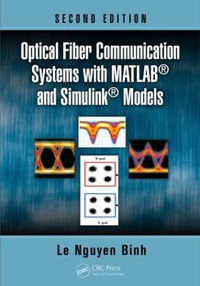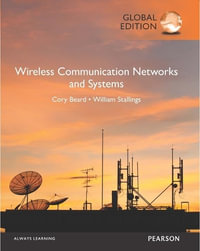| Introduction and Motivation | |
| Introduction | p. 3 |
| Modern Telecommunication Networks | p. 9 |
| Common Channel Signaling | p. 10 |
| CCSN Objectives | p. 11 |
| Signaling System Number 7 | p. 11 |
| Intelligent Networks | p. 12 |
| Service Provision | p. 13 |
| The in Conceptual Model | p. 15 |
| Discussion | p. 15 |
| The TINA Approach | p. 17 |
| TINA and the in Concept | p. 18 |
| he TINA Computing Architecture | p. 19 |
| Discussion | p. 21 |
| Guiding the Network Design Process | p. 22 |
| Impact of Network Architectures on Performance Analysis | p. 23 |
| Requirements | p. 24 |
| Summary and Concluding Remarks | p. 26 |
| The View from Industry: First Modeling Approaches | p. 27 |
| Modeling and Evaluation Requirements: The Practitioner's View | p. 28 |
| A First Modeling Approach | p. 30 |
| Model Description | p. 30 |
| Model Evaluation | p. 32 |
| Application Example | p. 35 |
| System Description | p. 35 |
| Analysis | p. 38 |
| Relationto Other Approaches | p. 44 |
| Single System Evaluation Approaches | p. 44 |
| Approaches Dealing with the Mapping Problem | p. 46 |
| Discussion | p. 47 |
| Summaryand Concluding Remarks | p. 47 |
| Node Analysis | |
| Quasi-Birth-and-Death Processes | p. 51 |
| Definition | p. 52 |
| State Space and Transition Structure | p. 52 |
| Generator Matrix and Steady-State Characterization | p. 53 |
| Matrix-Geometric Solution Methods | p. 56 |
| Preliminaries | p. 56 |
| The Successive Substitution (SS) Method | p. 58 |
| The Logarithmic Reduction (LR) Approach | p. 59 |
| Naoumov's Improved LR Algorithm | p. 61 |
| Transform Methods | p. 63 |
| The Cyclic Reduction Method | p. 63 |
| The Invariant Subspace Approach | p. 64 |
| The Spectral Expansion Method | p. 66 |
| Non-Skip-Free QBDs | p. 72 |
| Reduction to Standard QBD Processes | p. 72 |
| Approaches for Direct Solution | p. 75 |
| Numerical Comparison of Solution Methods | p. 76 |
| Candidate Solution Algorithms | p. 77 |
| The Model under Investigation | p. 78 |
| Numerical Results | p. 79 |
| Conclusion | p. 93 |
| QBD Extensions | p. 94 |
| Approximate Analysis | p. 94 |
| Buffer Resets | p. 96 |
| Quasi-Stationary Solution | p. 98 |
| Multi-Dimensional QBD Processes | p. 99 |
| Summary and Concluding Remarks | p. 100 |
| High-Level System Specification with iSPNs | p. 103 |
| The iSPN Modeling Environment | p. 103 |
| High-Level Modeling Approaches | p. 104 |
| Basic Idea and Related Approaches | p. 105 |
| Formal Definition of iSPNs | p. 106 |
| An Examplei SPN Model | p. 109 |
| Equivalence to QBD Markov chains | p. 111 |
| Preliminaries | p. 111 |
| The Simple Case: Two Successive Submarking-Equivalent j-Sets | p. 113 |
| The General Case: All iSPNs Lead to QBD Processes | p. 116 |
| Coverage of all QBDs by iSPNs | p. 121 |
| Implementation Issues | p. 125 |
| Tightly Choosing jmin | p. 125 |
| State Space Generation | p. 130 |
| Accounting for Immediate Transitions | p. 135 |
| Modeling Batch Arrivals and Departures | p. 138 |
| Extensions for Buffer Resets and Quasi-Stationary Models | p. 139 |
| Summaryand Concluding Remarks | p. 140 |
| Application Examples: Node Analysis | p. 143 |
| Connection Management for Video Traffic | p. 143 |
| System Description | p. 144 |
| Model Development | p. 145 |
| Parameterization | p. 146 |
| Numerical Results | p. 146 |
| Conclusion | p. 153 |
| WWW Traffic and TCP/IP Congestion Control | p. 153 |
| System Description | p. 154 |
| Model Development | p. 156 |
| Parameterization | p. 161 |
| Numerical Results | p. 164 |
| Conclusion | p. 170 |
| Accounting for Self-Similar Traffic | p. 171 |
| Self-Similar Stochastic Processes | p. 172 |
| Self-Similar Traffic Models | p. 174 |
| Parameterization | p. 178 |
| Numerical Results | p. 179 |
| Conclusion | p. 181 |
| Summaryand Concluding Remarks | p. 183 |
| Network Analysis | |
| Queueing Network Analysis Techniques | p. 187 |
| Main Problemsand Existing Work | p. 188 |
| Main Issues | p. 188 |
| Parametric Decomposition Approaches | p. 190 |
| Conclusion | p. 193 |
| The Queueing Network Analyzer | p. 194 |
| Basic QNA | p. 195 |
| Finite Buffers | p. 200 |
| From QNA Nodes to QBD Nodes | p. 204 |
| Using QBDS to Improve QNA | p. 206 |
| Conclusion | p. 212 |
| Embeddingi SPNs | p. 212 |
| Job Arrivals | p. 214 |
| Departure Process Derivation | p. 216 |
| Conclusion | p. 225 |
| Splitting and Merging Traffic Streams | p. 225 |
| Splitting | p. 225 |
| Merging | p. 227 |
| Dealing With the Distributional Explosion | p. 228 |
| Conclusion | p. 231 |
| Summaryand Concluding Remarks | p. 233 |
| Conclusions and Outlook | p. 235 |
| Linear Algebra and Probability Theory Primer | p. 239 |
| Polynomial Eigenvalue Problems | p. 239 |
| Definition | p. 239 |
| Linearization | p. 239 |
| Other Solution Approaches | p. 243 |
| Phase-Type Distributions | p. 243 |
| Markovian Arrival Processes | p. 244 |
| Tool Description | p. 247 |
| User Interface | p. 247 |
| Model Specification | p. 247 |
| Execution Control | p. 252 |
| Output Format | p. 252 |
| Implementation | p. 254 |
| Model Specifications | p. 255 |
| An in Model Basedon M G | |
| A Checkpointing Transaction Processing System | p. 256 |
| Parameterization | p. 257 |
| Variable Definitions | p. 257 |
| Petri Net Specification | p. 258 |
| Definition of Reward-Based Measures | p. 259 |
| Connection Management for Video Traffic | p. 260 |
| Variable Definitions | p. 260 |
| Petri Net Specification | p. 260 |
| Definition of Reward-Based Measures | p. 262 |
| WWW Traffic and TCP/IP Congestion Control | p. 262 |
| Variable Definitions | p. 262 |
| Petri Net Specification | p. 263 |
| Definition of Reward-Based Measures | p. 266 |
| Pseudo-Self-Similar Arrival Processes | p. 266 |
| Variable Definitions | p. 267 |
| Petri Net Specification | p. 267 |
| Definition of Reward-Based Measures | p. 268 |
| Notation and Abbreviations | p. 269 |
| Bibliography | p. 273 |
| Index | p. 285 |
| Table of Contents provided by Publisher. All Rights Reserved. |
























